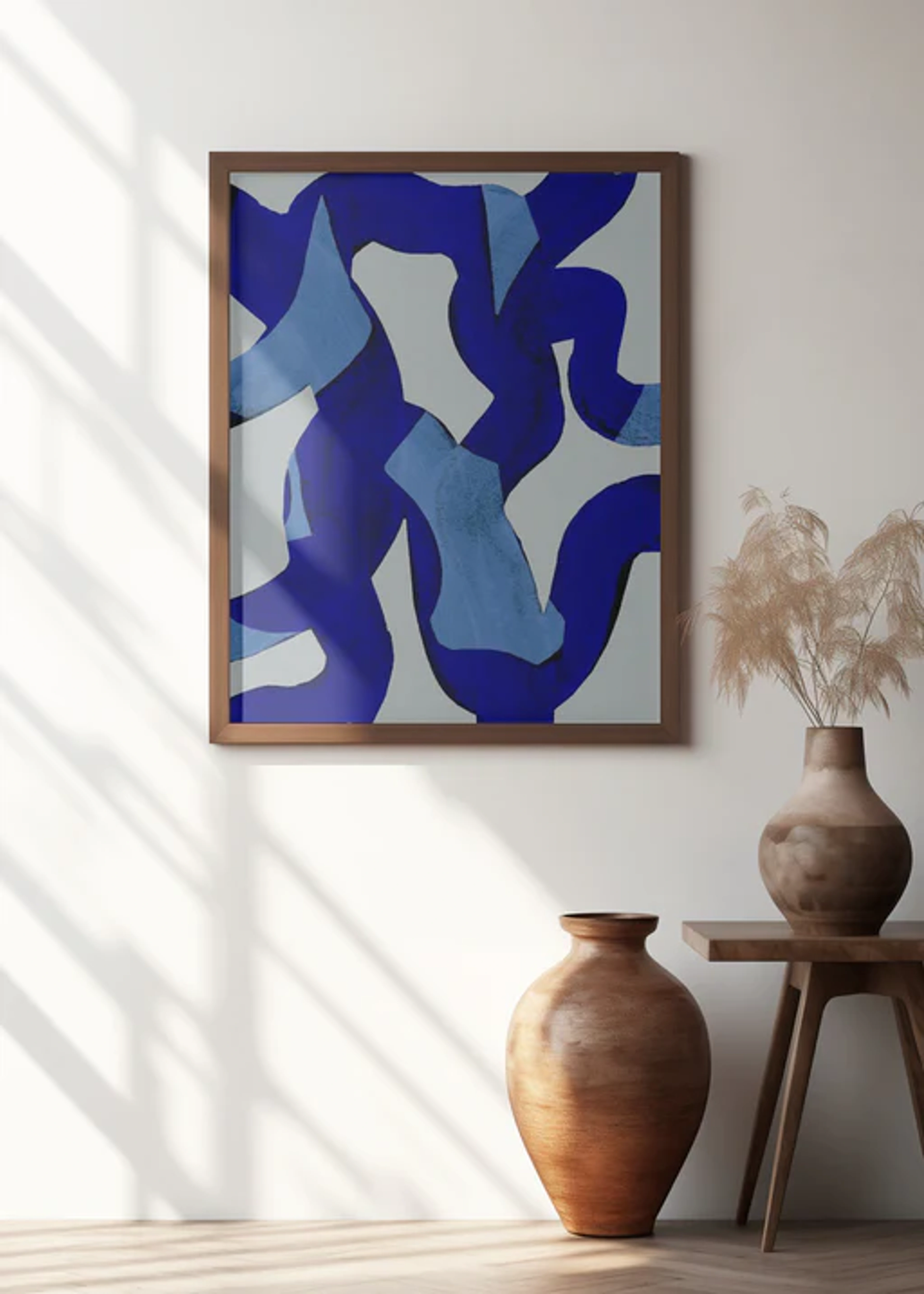
Madrid's Artistic Pulse: A Curator's Guide to Galleries & Unexpected Art
Explore Madrid's art scene through a curator's eyes. Discover iconic museums, hidden contemporary galleries, vibrant street art, and practical tips to fuel your own artistic journey in Spain's capital.
Madrid's Artistic Pulse: A Curator's Guide to Galleries & Unexpected Discoveries
Tell me, have you ever been to a city that just hums with an undeniable artistic electricity, a palpable buzz woven into its very cobblestones? For me, Madrid pulses with this energy. It’s a city where history doesn't just rest in textbooks but lives and breathes, often beautifully framed or sculpted, waiting for discovery in every sun-drenched plaza and hidden alley. As someone who’s spent a fair share of my life deciphering art’s stories, approaching a city like Madrid—renowned for its classical masters, modern masterpieces, and vibrant contemporary experimentation—can be both exhilarating and, let’s be honest, a little wonderfully overwhelming. Where do you even begin with such a treasure trove?
This guide is my answer: my curated journey through Madrid's art scene, a city I’ve come to adore for its layers of artistic expression. We'll peel them back together, revealing not only its iconic masterpieces and well-loved institutions but also its truly unexpected discoveries, from underground art movements to the vibrant contemporary pulse that truly makes it one of the world's great art capitals of the world. We'll explore its legendary Golden Triangle, venture into surprising contemporary hubs, uncover art woven into the city's very architecture, and even dive into the raw energy of its street art scene. My hope is you'll discover both the city's grand narratives and its most intimate, sometimes defiant, whispers, finding your own path through this incredible art capital.
It’s fascinating to realize this artistic buzz isn't new; it's a thread woven through Madrid's very history, often thanks to the discerning eyes of its monarchs. Think of the Habsburg and Bourbon rulers; they weren't just figureheads but serious collectors whose fervent appreciation for the arts funded grand collections, forming the bedrock of institutions like the Prado Museum, and profoundly influencing the opulent displays within the Royal Palace of Madrid itself. Beyond the Crown, the Catholic Church and influential noble families also played pivotal roles, commissioning countless works that adorned cathedrals, monasteries, and private estates—like the stunning altarpieces for Toledo Cathedral or the opulent decorations for the palaces of the Duke of Alba—further embedding art into the very fabric of daily life. This rich heritage also weathered periods of significant challenge, notably the Spanish Civil War and the subsequent Franco dictatorship. While these times often suppressed overt artistic expression, they also fueled profound resilience and a powerful undercurrent of underground movements. Artists, writers, and intellectuals sought clandestine ways to express dissent and preserve cultural identity, often through symbolic abstraction or subtly subversive realism, fostering a spirit of resistance that continued to shape modern Spanish art. The Spanish Civil War, for instance, was a devastating conflict that, far from silencing artistic voices, dramatically reshaped the artistic landscape of the 20th century. It prompted powerful anti-war expressions, most famously in Pablo Picasso's Guernica, and fueled a vibrant, albeit at times suppressed, surge of avant-garde movements like Surrealism and Cubism as artists grappled with new realities. For me, this deep-rooted heritage doesn't just show how art in Spain is deeply intertwined with national identity; it's a testament to enduring resilience, constantly pushing boundaries and reflecting the human condition with profound honesty. Madrid truly stands as one of the world's great art capitals of the world due to this rich tapestry of historical patronage, revolutionary artistic response, and enduring cultural significance.
The Golden Triangle: Madrid's Triumvirate of Masterpieces
This rich history, fueled by centuries of artistic patronage and dramatic societal shifts, finds its most concentrated and magnificent expression in Madrid's famed Golden Triangle of Art. It’s an extraordinary trio of institutions, each a universe in itself, yet conveniently nestled within about 15 minutes' walk of each other. I've walked that stretch countless times, feeling a familiar excitement bubble up, like a kid headed for a candy store, only this candy feeds the soul. It's a journey I genuinely look forward to every single time, because it's where the grand narratives of art history truly come alive, making these, in my humble opinion, some of the very best art galleries in Madrid.
The Prado Museum: Where Time Stands Still
Ah, the Prado Museum Madrid. If ever a museum embodied the soul of a nation's art, it is here. I remember my first visit, feeling almost delightfully overwhelmed by the sheer scale, the weight of history in every brushstroke. I often joke that you almost need a map, a packed lunch, and maybe even a small survival kit (and definitely a strong Spanish coffee afterwards!) to tackle it all! (Speaking from personal experience, of course.) It’s home to an unparalleled collection of Spanish masters. Francisco Goya's chilling depictions of war, like The Third of May 1808, offer a powerful, almost journalistic response to the Napoleonic occupation. For me, this painting is more than just a historical record; it's a foundational piece of modern war reporting, confronting brutal realities directly and profoundly changing how history painting was conceived. You'll also find Diego Velázquez's profound portraits and genre scenes. Beyond the iconic Las Meninas, I always recommend seeking out The Spinners – a work that still makes me marvel at its masterful interplay of light and shadow. I see it as a painting that subtly questions the illusionary nature of reality itself, a quiet meta-commentary on the very act of artistic creation, perhaps asking us to consider the artistry involved in any form of storytelling, be it spinning thread or painting a canvas. And then there are El Greco's elongated spiritual figures, such as The Nobleman with his Hand on his Chest, which always transport me to a different, more ethereal realm. Beyond these Spanish titans, you'll encounter the intricate surrealism of Hieronymus Bosch's The Garden of Earthly Delights and a comprehensive narrative of Flemish, Italian, and German works from the 14th to the 19th centuries. Don't miss Bosch's The Garden of Earthly Delights; it's a universe of symbolism that I could spend hours deciphering, always finding something new and unsettling—a truly unique challenge for any curator. You’ll also encounter other Spanish titans like the devotional intensity of Murillo and the stark realism of Ribera, whose Martyrdom of Saint Philip is a profoundly moving study of human suffering. My personal ritual involves finding a quiet spot in front of Velázquez's Las Meninas and just... observing. It's a painting that continually reveals new layers; for me, it's often the subtle interplay of light on the various textures, from velvet to canvas, that always shows me something new, a silent conversation across centuries – and sometimes I swear I can almost feel the texture of the paint itself. This silent conversation across centuries often sparks new ways of thinking about texture and light in my own abstract creations. Don't rush it; let the masters speak. For those curious about the grand sweep of art history, a visit here truly brings it to life. It's a journey not just through art, but through time itself. What hidden detail will The Spinners reveal to you today?
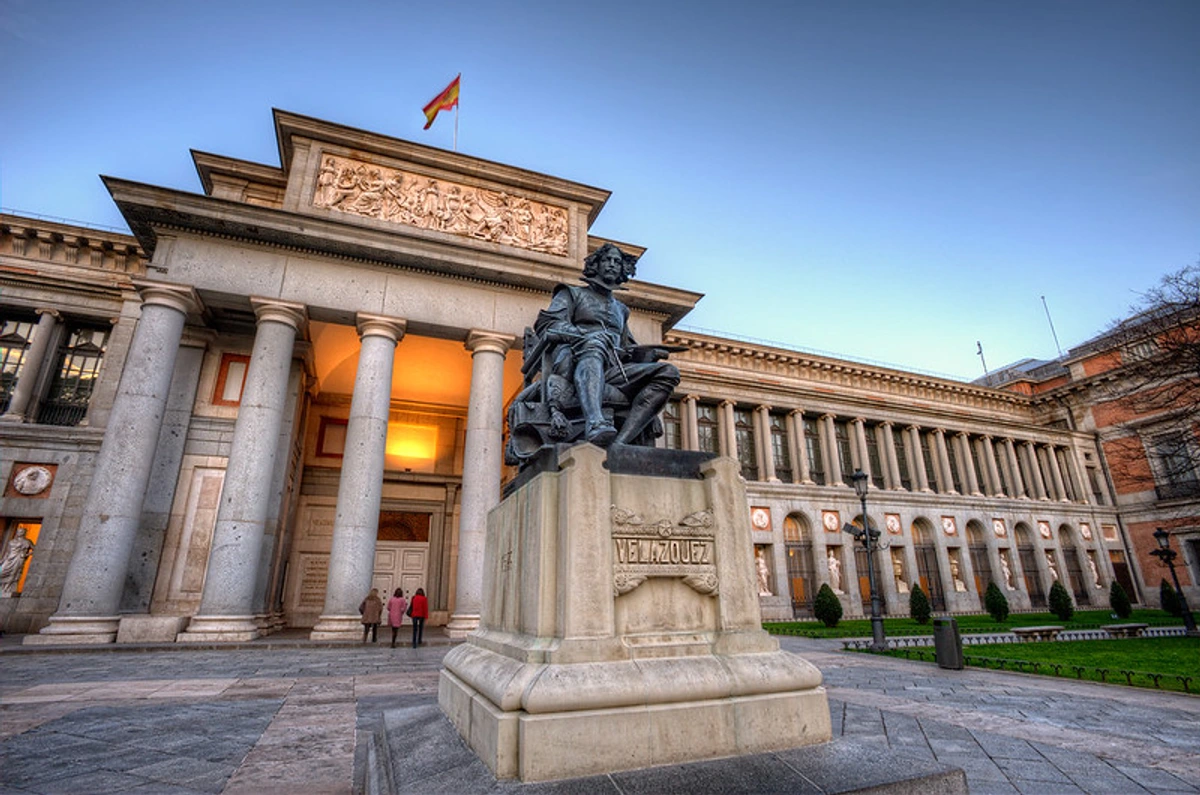
Museo Nacional Centro de Arte Reina Sofía: A Bold Modern Canvas
Now, if the Prado Museum is about looking back, the Museo Nacional Centro de Arte Reina Sofía is very much about looking forward, or at least, engaging with the tumultuous, vibrant journey of 20th-century art. I'll admit, when I first started exploring art, contemporary pieces sometimes felt like a challenge, a riddle I hadn't quite figured out. But the Reina Sofía Museum Madrid, with its magnificent centerpiece, Pablo Picasso's monumental anti-war masterpiece, Guernica, helps bridge that gap between classical and modern understanding. To stand before Guernica is a visceral experience; for me, it’s art as protest, art as raw emotion, art that still screams its message across the decades, echoing the trauma of the Spanish Civil War. I remember my first time seeing it; the sheer scale and raw energy just took my breath away, the fragmented figures almost vibrating with silent screams that resonated deep within me. Beyond Picasso, you'll find an incredible depth of works by Dalí (don't miss Face of the Great Masturbator, a raw dreamscape that delves into subconscious anxieties and obsessions with unsettling imagery – think of it as a wild, unfiltered peek into a surreal dream journal, exposing the vulnerability and often disturbing beauty of the human psyche), Miró, Juan Gris, and a host of other Spanish and international modern masters. This collection brilliantly showcases the Spanish contributions to movements like Cubism and Surrealism, demonstrating how artists like Juan Gris and others wrestled with new ways of seeing and feeling in a changing world, exploring everything from abstract expression to powerful social realism. It also powerfully displays the artistic responses to the Spanish Civil War and the subsequent Franco dictatorship, showcasing artists who grappled with new realities through movements like Informalism and Equipo Crónica's pop art-infused critiques. Here, the past's echoes meet the present's roar, a testament to art's enduring relevance. What new perspective on modernism will you find here today?
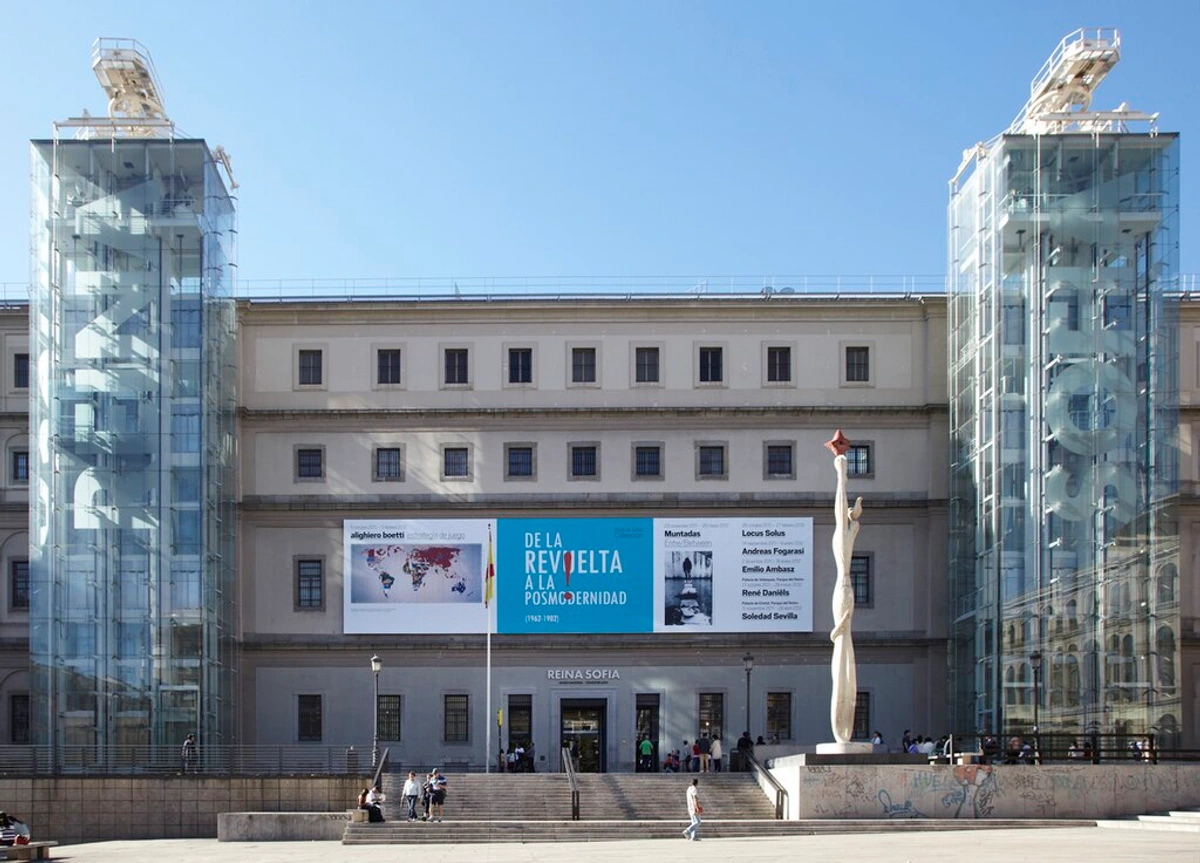
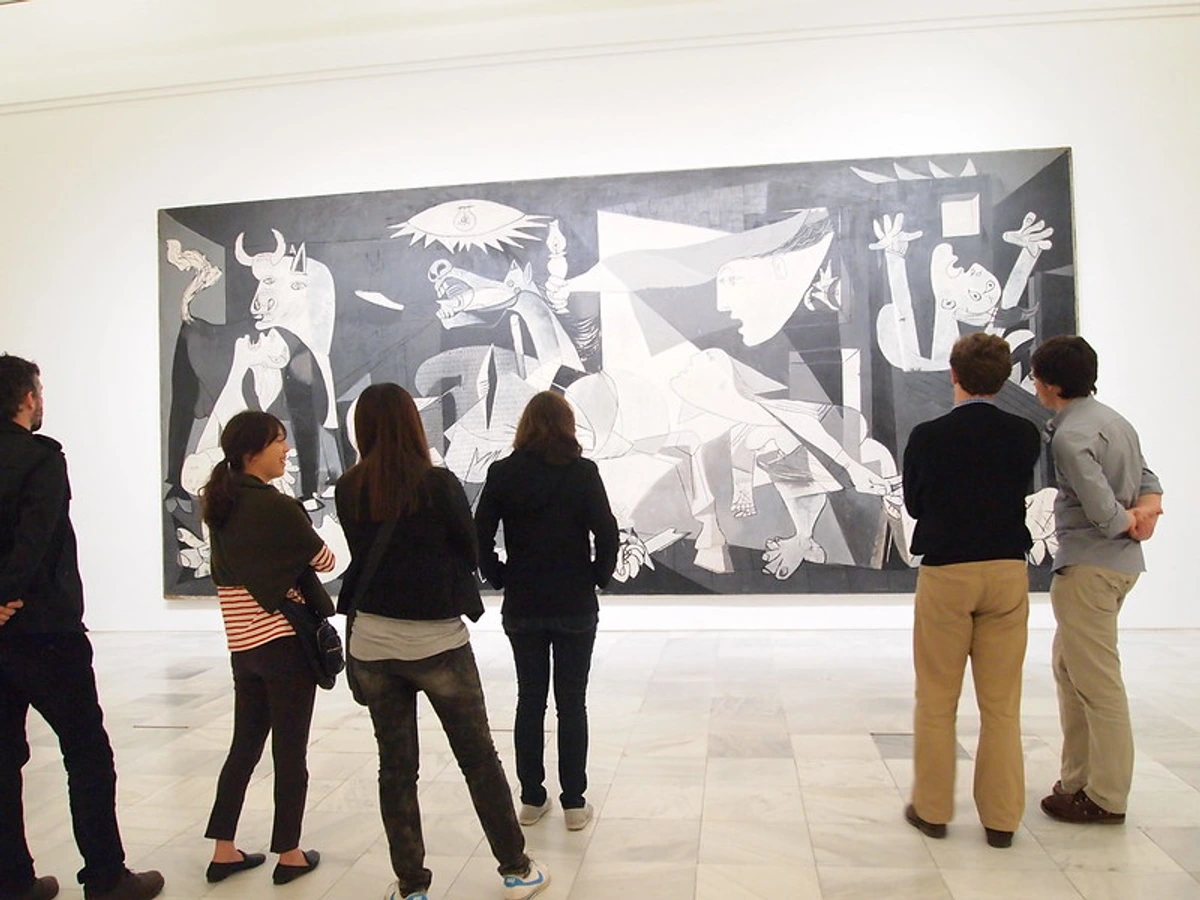
Museo Thyssen-Bornemisza: A Bridge Across Centuries
Nestled perfectly between the Prado Museum and the Reina Sofía Museum, the Museo Thyssen-Bornemisza offers a fascinating bridge, a unique private collection that traverses eight centuries of European painting. What I love about the Thyssen is its wonderfully eclectic nature; you can wander from early Italian Gothic through the Dutch masters, stumble upon Impressionists, and then find yourself face-to-face with a vibrant American avant-garde piece, all under one roof. This museum doesn't just fill in historical gaps; it actively weaves a compelling narrative arc, vividly connecting seemingly disparate eras. For instance, comparing a detailed 17th-century Dutch portrait with a bold 19th-century Impressionist depiction of a figure, you begin to grasp how evolving societal values and artistic innovations reshaped the very concept of identity on canvas, a dialogue the Thyssen masterfully facilitates. You see how artists in different periods, like Max Beckmann and John Singer Sargent, tackled shared themes, such as portraiture or societal change, with distinct stylistic voices, creating a silent conversation across time. It's a journey that truly immerses you in how art evolves and responds across the centuries, from the solemnity of medieval depictions to the bold expressions of the 20th century. I remember one afternoon being utterly captivated by a particular Renoir, its joyful brushstrokes a stark contrast to a nearby medieval altarpiece, yet both speaking volumes about the human condition. It truly showcases how different modern art galleries can offer unique perspectives, making me ponder how my own abstract pieces might find themselves in dialogue with works centuries apart. This museum isn't just a display; it's a profound dialogue between eras and styles. Which surprising artistic conversation will you discover?
_07.jpg&w=1200&q=93&output=webp)
Golden Triangle Museums at a Glance
To help you quickly orient yourself, here's a snapshot of what each museum offers:
Museum | Focus | Key Highlights | Vibe |
|---|---|---|---|
| Prado | Classical Spanish & European | Goya, Velázquez, El Greco, Bosch, Murillo | A Grand Journey Through Spanish Masters |
| Reina Sofía | Modern & Contemporary Spanish | Picasso's Guernica, Dalí, Miró, Gris | Bold, Provocative, Emotionally Charged |
| Thyssen | 8 Centuries of European (Private) | From Gothic to Pop Art, bridging eras | Eclectic, Curated, Thought-provoking |
Beyond the Golden Triangle: Unearthing Madrid's Diverse Artistic Soul
While the Golden Triangle offers an unparalleled immersion into art history, Madrid's artistic soul extends far beyond these titans. Trust me, having immersed yourself in the monumental 'Golden Triangle,' your artistic journey is far from over. Madrid's vibrant landscape opens up even further, revealing a diverse array of spaces that challenge, inspire, and delight. Ready for some deeper dives into the city's broader artistic offerings?
Echoes of Royalty & History: Grandeur and Personal Visions
- Royal Palace of Madrid: A Glimpse into Royal Collections While primarily a historical site, the Royal Palace of Madrid holds a magnificent art collection, particularly strong in its world-renowned tapestries (like the stunning Goya series) and its incredibly detailed Royal Armory. This isn't just art on display; it's art embedded within opulent surroundings of power and history, explicitly designed to showcase the wealth, authority, and divine right of the Spanish monarchy. Beyond paintings by artists like Goya, Velázquez, and El Greco, you'll find exquisite decorative arts, intricate clockwork, ceramics, and sumptuous textiles that reflect centuries of royal taste and craftsmanship. For me, it offers unique insights into royal commissions and the decorative arts that shaped an era. If you're keen to see the extent of royal patronage beyond the Prado Museum's walls, this is a fascinating complementary visit that truly rounds out the historical context.
- Museo Lázaro Galdiano: A Collector's Eclectic Vision If you're seeking an artistic experience that feels like stepping into a private, wonderfully eccentric collection, the Museo Lázaro Galdiano is an absolute must. Housed in the former home of art collector José Lázaro Galdiano, this museum is a treasure trove of decorative arts, jewelry (like exquisite Renaissance enamels and intricate goldwork), weaponry, and paintings from the medieval period to the 19th century. It offers a fascinating glimpse into the passion of a single collector and highlights how personal taste can shape a profound artistic legacy. I find it a delightful contrast to the grand narratives of the bigger museums, a place where every object tells a unique story – for me, it's one of those truly unexpected discoveries that make a trip to Madrid memorable.
Pulsating Contemporary Hubs: Innovation and Experimentation
- CaixaForum Madrid: Innovation and Industrial Rebirth Just a stone's throw from the Prado Museum, CaixaForum Madrid stands out, not just for its striking "vertical garden" facade, but for its incredibly diverse and often thought-provoking exhibition program. Housed in a former power station, it's a fantastic example of how industrial spaces can be transformed into vibrant new cultural hubs, literally breathing new life into old bones. I always make a point of checking their schedule; they host everything from ancient civilizations to contemporary photography, always presented with a fresh perspective. I remember a particularly impactful exhibition on sustainable design here that shifted my own view of functional art. It’s a wonderful spot to engage with art that's current and dynamic, reminding us that art truly finds a home anywhere.
- Matadero Madrid: A Creative Transformation & Contemporary Hub Now, this one is truly special. Imagine a sprawling former slaughterhouse, radically transformed into a cutting-edge cultural center. It's a place where the ghosts of its past seem to have been replaced by the vibrant energy of contemporary creation – a truly mind-bending metamorphosis! Matadero Madrid isn't your traditional gallery; it's a vibrant, experimental hub for contemporary creation, embracing a broad spectrum of modern art forms. Walking through its vast, reimagined spaces, I often find myself thinking about the incredible power of transformation, not just of buildings, but of ideas themselves. I remember discovering an installation here – a series of kinetic sculptures that danced with light – and for a moment, the heavy industrial past of the building faded, replaced by pure, joyful innovation. Here, you'll find film, theater, design, and truly avant-garde visual art that pushes boundaries in surprising ways – from immersive digital projections and soundscapes to experimental performance art and conceptual installations. If you're looking for art that sparks conversation and challenges perceptions, this is absolutely your spot.
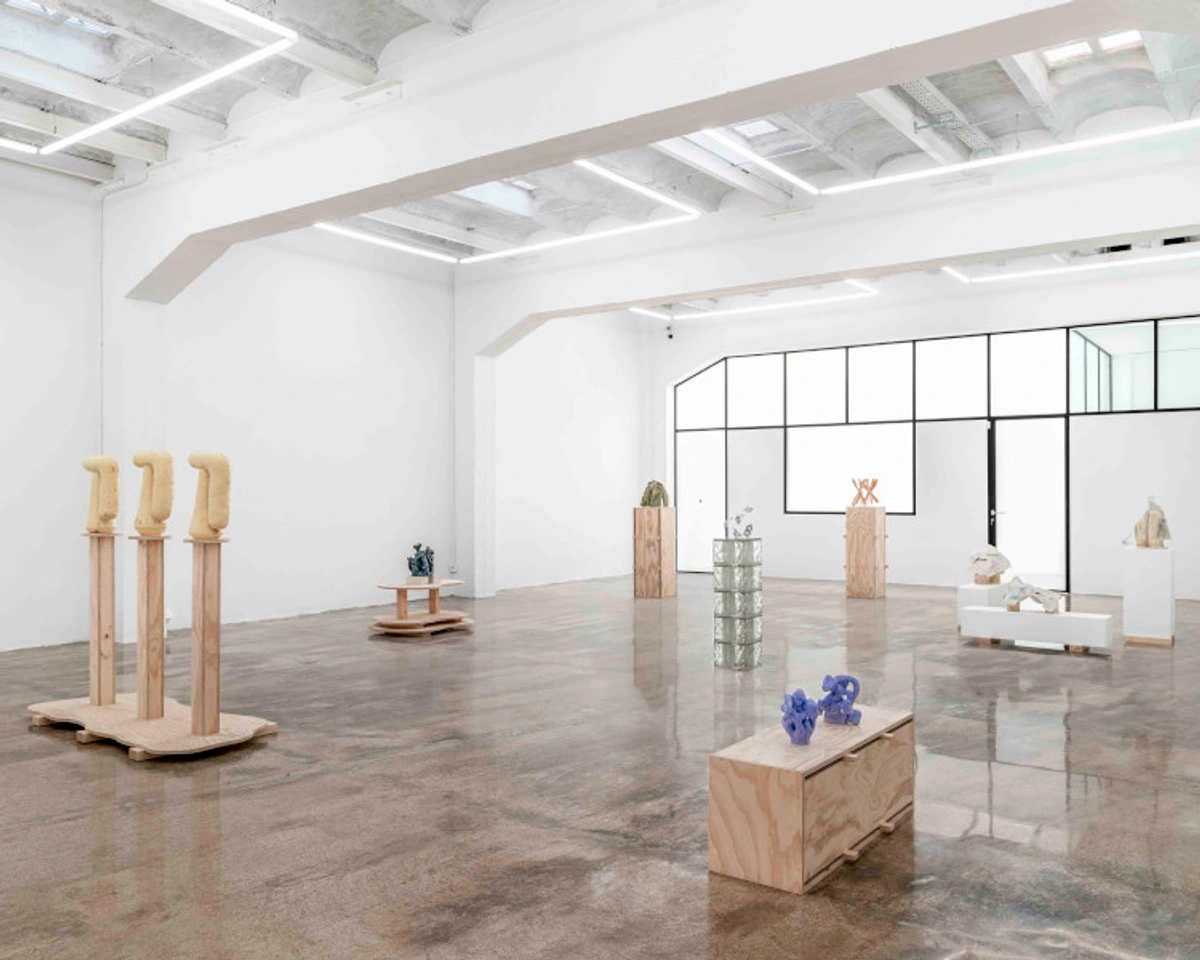
- Fundacion Mapfre: Unexpected Gems in Photography & Modern Art Tucked away somewhat, Fundacion Mapfre often surprises me with its meticulously curated exhibitions, particularly strong in photography and modern art from the turn of the 20th century. I've discovered several lesser-known but profoundly impactful artists here, with a notable focus on pioneering documentary photography, evocative portraiture, vast landscape series, or early 20th-century movements that rarely get the spotlight elsewhere, like the Spanish avant-garde or artists such as María Blanchard, whose Cubist-influenced works offer a unique perspective. It feels less like a grand institution and more like a dedicated space for profound artistic dives. It’s a powerful reminder that sometimes the most memorable encounters happen in the quieter corners, away from the madding crowds.
Intimate Artistic Havens: Connecting with Individual Spirits
- Sorolla Museum: A Painter's Intimate World For a truly different pace, the Sorolla Museum is a delightful escape. Housed in the beautiful former home and studio of the impressionist painter Joaquín Sorolla, it offers a remarkably intimate glimpse into the artist's life and work. It's a serene experience, wandering through rooms filled with his vibrant, light-filled canvases and personal belongings. For me, it’s less about grand narratives and more about connecting with the creative spirit of one man, a truly personal art encounter. It’s like stepping directly into his sun-drenched world, where you can almost feel the Mediterranean light and sea breeze in his brushstrokes.
Madrid's Urban Canvas: Art in Architecture & Public Spaces
But Madrid's artistic soul isn't confined to gallery walls; the city itself is a masterpiece, an urban canvas where art lives and breathes in its very structure. While galleries offer curated experiences, Madrid's urban fabric serves as a dynamic, evolving exhibition. It's a testament to the city's enduring embrace of creativity. You'll see it in the ornate grandeur of the Palacio de Comunicaciones (now Cybele Palace) in Plaza de Cibeles, echoing classical and Modernista influences, or in the elegant 19th-century architecture of the Barrio de Salamanca. Don't forget the Temple of Debod, an ancient Egyptian temple relocated to a Madrid park, offering a unique artistic contrast against the city skyline, especially at sunset. Look closely, and you might even spot contemporary sculptures by artists like Cristina Iglesias in public gardens, subtly blending natural and architectural forms, or the striking Miró Monument in La Castellana, a vibrant splash of color against the urban grey. Beyond these, keep your eyes peeled for sculptures by Eduardo Chillida in public squares, or the dynamic architectural forms of the Kio Towers tilting against the skyline – each a deliberate stroke on the city's grand canvas.
The eclectic mix of Modernista and Art Deco buildings along Gran Vía (keep an eye out for the stunning Metropolis Building or the Edificio Grassy) tells its own fascinating story, too. Even the historic squares, like Plaza Mayor and Puerta del Sol, with their statues and facades, are open-air galleries reflecting centuries of artistic and civic expression. I'm always on the lookout for contemporary sculptures unexpectedly placed in public parks or plazas, offering a modern counterpoint to the city's classical beauty – I once found a striking abstract installation nestled in a quiet garden, a perfect, unexpected moment of discovery. This architectural artistry is complemented by the vibrant, ever-changing canvas of Madrid's streets, where street art adds another layer to its rich artistic tapestry. The urban fabric itself truly becomes a dynamic, evolving exhibition, from its grandest gestures to its most subtle adornments.
Exploring Independent Art Spaces & Street Art: The City's Pulsating Underground
Beyond the established names, Madrid holds a vibrant, pulsating undercurrent: its thriving ecosystem of smaller, independent art galleries in Madrid and the ever-present canvas of its streets. These are the dynamic spaces where emerging artists find their voice, where experimental ideas are nurtured, and where you might just stumble upon the next groundbreaking piece. Often clustered in neighborhoods, these areas are known for their active cultural communities and unwavering support for urban artists, making them ideal for an artistic treasure hunt.
- Malasaña: This youthful, energetic district is where you might stumble upon smaller, experimental galleries showcasing avant-garde photography, cutting-edge installations, and emerging talent with a strong focus on conceptual and digital art. The vibe here is raw and exciting, constantly pushing boundaries. I remember finding a tiny pop-up exhibition in a former shopfront here, filled with incredibly inventive digital art that made me rethink the possibilities of light and shadow.
- Lavapiés: Known for its vibrant, diverse cultural influences, Lavapiés surprises with its often politically charged street art and community-focused projects. You'll find powerful murals reflecting social commentary, along with pop-up spaces showcasing diverse artistic voices, from experimental performance art to community-based textile projects. Hidden pop-up spaces, workshops, and vibrant murals are common, offering a glimpse into the city's conscience. For finding these ephemeral spots, I often just wander with an open mind, keeping an eye out for open doors and vibrant new work. Local art blogs or even Instagram hashtags (#MadridStreetArt) can also be surprisingly helpful.
- Barrio de las Letras (Literary Quarter): Amidst its literary landmarks and charming streets, you'll find more established boutique modern art galleries focusing on contemporary painting and sculpture. These spaces often offer a refined yet fresh perspective on current artistic trends.
Keep an eye out for dynamic artist-run collectives like the Espacio de Creadores or Nave 16 (within Matadero Madrid itself) and pop-up exhibitions that showcase the city's cutting edge. And while you're exploring, keep an eye out for Madrid's vibrant street art scene, where you'll encounter everything from large-scale, politically charged murals to whimsical stencil art and intricate graffiti pieces. Artists like Okuda San Miguel are renowned for their kaleidoscopic geometric patterns and surrealist animal figures, often carrying universal messages of hope and unity; his work feels like a vibrant conversation between pop art and ancient symbolism. Meanwhile, the Boa Mistura collective often creates community-focused murals with impactful messages that transform urban spaces into vibrant canvases for dialogue and community building, often using typography to inspire reflection. I remember turning a corner in Lavapiés one afternoon and being stopped dead in my tracks by a vibrant mural that stretched across an entire building, telling a story of resilience and community. It was a powerful, unexpected encounter that reminded me that art truly lives everywhere.
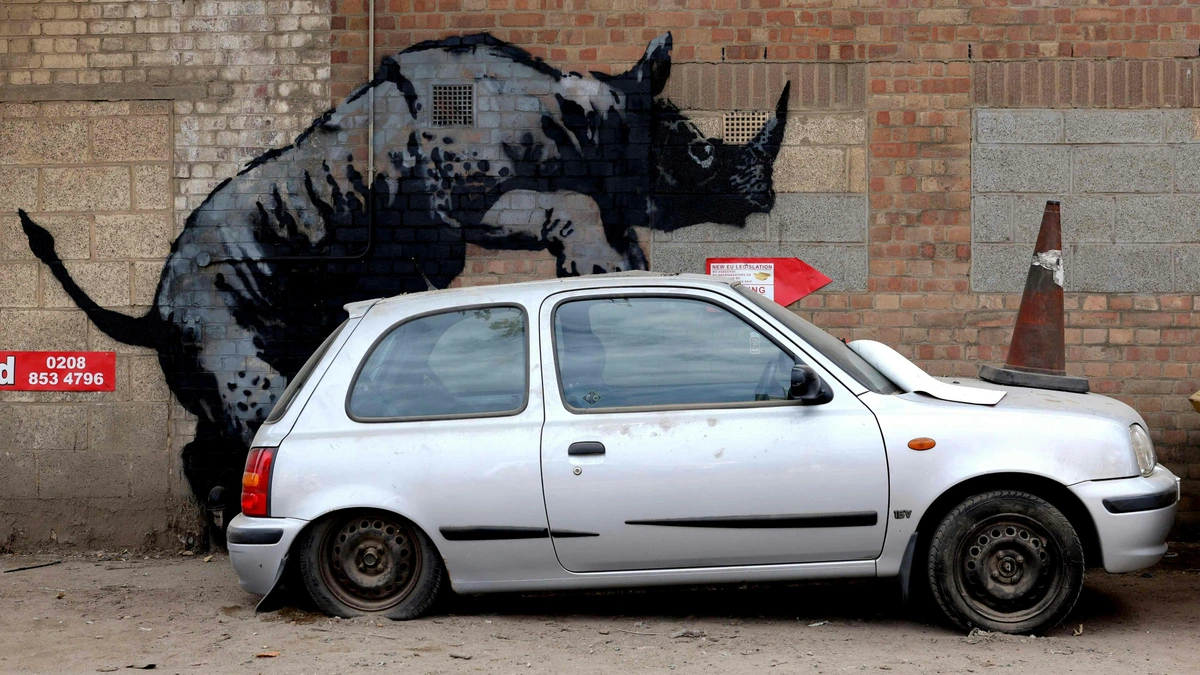
Madrid's Art Calendar: Festivals & Fairs
For those who love to dive deep into contemporary art, timing your visit with one of Madrid's art festivals or fairs can be an incredibly rewarding experience. These events transform the city into an even larger gallery, showcasing both established and emerging talent from Spain and beyond. It’s when the art world truly descends upon Madrid, creating an electric atmosphere.
- ARCOmadrid (February): This is undoubtedly Spain's most important international contemporary art fair, drawing collectors, curators, and artists from around the globe. It's a huge, high-energy event that can be a bit overwhelming, but it's where you'll see the cutting edge of the global art market. Even if buying isn't on your agenda, the sheer breadth of work and the opportunity to spot trends are invaluable.
- ARTIST (Spring/Autumn): Focused on independent artists, this fair offers a more intimate setting to discover new talent and perhaps even purchase directly from the creators themselves. It's a wonderful counterpoint to the larger, more commercial fairs, reminding me of the vibrant community I foster at my own museum in 's-Hertogenbosch. Beyond these, look out for other dynamic events like JustMAD and UVNT Art Fair, which specifically champion emerging artists and urban contemporary art, adding even more layers to Madrid's vibrant scene.
- PhotoEspaña (June - July): This international festival of photography and visual arts takes over Madrid with exhibitions in numerous galleries and public spaces. If you're passionate about photography, this is a must-see, offering a diverse range of styles and themes from renowned masters to promising newcomers.
These events offer a fantastic way to engage with Madrid's dynamic art scene, providing concentrated bursts of creativity that can inspire any artist's artistic journey.
My Curator's Toolkit for Navigating Madrid's Art Scene
So, you’ve conquered the Golden Triangle – or at least started to! Now, a word from your friendly curator: I love art, but I'm also wonderfully, imperfectly human. Museum fatigue is a very real thing, and trust me, it can sneak up on even the most seasoned art lover. Especially after tackling such monumental collections, you might need a game plan. Here's how I try to make the most of my visits, particularly in a city as rich as Madrid, ensuring the art speaks to me, rather than just overwhelming me:
Mindful Exploration: Pace Yourself and Recharge
- Pace Yourself Strategically: Don't try to see everything in one go. Pick a few key galleries or specific wings/exhibits within them. Better, I always say, to deeply engage with a few pieces than to superficially skim thousands – a mistake I've made more times than I care to admit! Remember, the experience of art is as important as the art itself. Give yourself time to sit, observe, and truly absorb. And trust me, after a few hours of intense visual and emotional input, even the most passionate art lover (like me, after a particularly rigorous Prado Museum session – often followed by an involuntary nap!) needs a strategic pause or some art-appreciation fuel, like a strong Spanish coffee and a quiet moment people-watching from a sun-drenched cafe terrace. I once tried to see everything at the Prado Museum in one day, and by afternoon, my eyes were glazed over, and I couldn't tell a Goya from a hole in the wall! Don't push it; self-care is absolutely part of the experience. This thoughtful pace allows the art to truly sink in, often sparking unexpected ideas for my own abstract creations, reminding me that sometimes less is indeed more.
- Take a Mindful Break: Find a café, sit, sketch in a small notebook, or just absorb. Art is meant to be reflected upon, not rushed. And if you find yourself deeply moved, perhaps it's a sign to explore the context – understanding the social and political climate in which a piece was created can deepen your appreciation immensely. This reflection is crucial for my own artistic journey, helping me to see how historical context informs even the most abstract modern pieces. I remember one glorious October, wandering between the Prado Museum and Thyssen-Bornemisza Museum, the crisp air and golden light making every architectural detail sing – it felt like the city itself was an artwork.
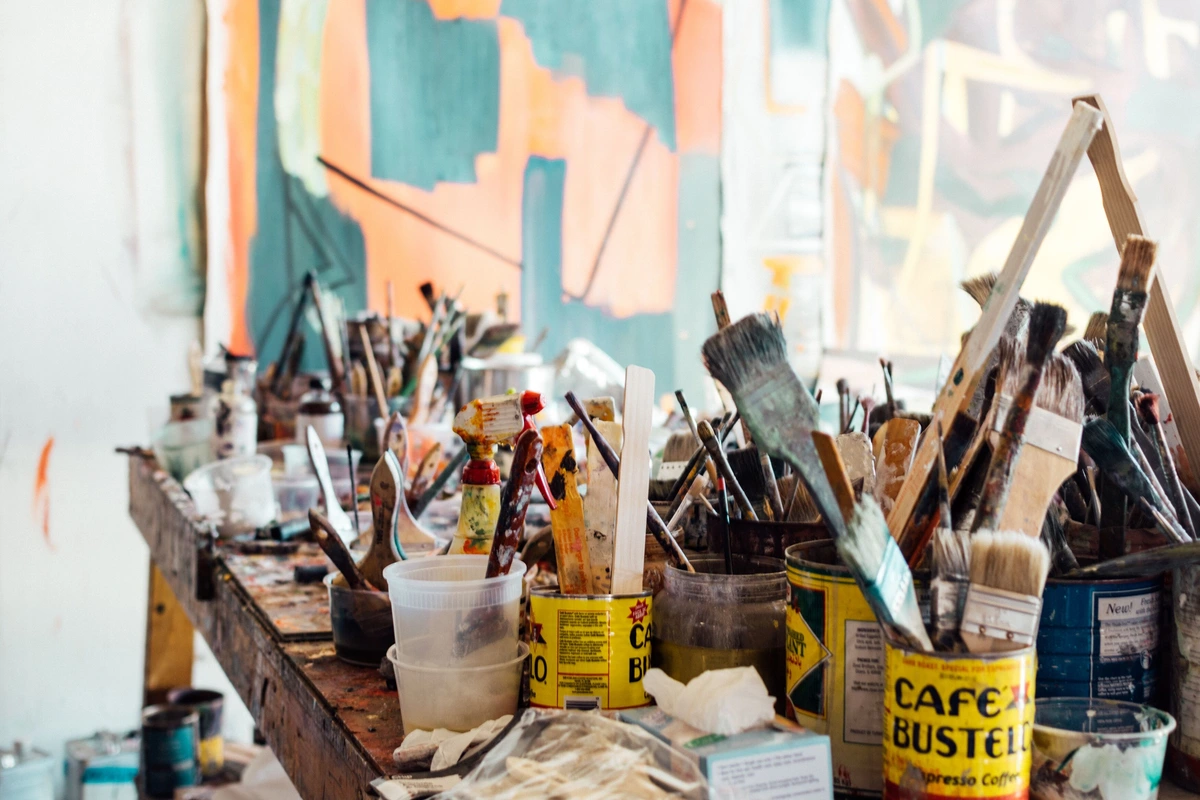
Strategic Planning: Timing and Tickets
- Go Early or Late: Mornings right after opening, or the last couple of hours before closing, often offer a more serene experience. Weekday visits are almost always preferable to weekends for major institutions. This is when the light is often best, and the ambient noise minimal, allowing for true connection with the artworks. For the Prado Museum and Reina Sofía Museum, try to visit on weekday mornings right after opening, or in the last couple of hours before closing on a weekday, to avoid the biggest crowds. Always double-check their official websites for opening hours and any holiday closures – nothing's worse than arriving at a locked door!
- Check for Temporary Exhibitions: Always consult the official websites of the museums for their current temporary exhibitions. These can be major draws and might require separate planning or even dedicated tickets. Sometimes, for me, these unexpected shows are where you find your most memorable encounters.
- Consider a Museum Pass: If you plan on visiting the "Golden Triangle" and more, an Abono Paseo del Arte pass can save you time and money. This combined ticket typically covers entry to the Prado Museum, Reina Sofía Museum, and Thyssen-Bornemisza Museum, and is usually valid for one year, allowing for multiple entries or a relaxed pace. It's a bit like a fast-pass to artistic enlightenment, encouraging a more holistic understanding by allowing you to revisit and see the connections between these titans of art at your leisure.
- Research Before You Go: For a truly rewarding visit, I always recommend a little homework. Look up a few key artists or specific works you're interested in before you even step foot in a museum. Understanding the context or a particular artistic movement can transform a casual viewing into a profound discovery. It's like having a secret key to unlock deeper layers of meaning. You might even find yourself discovering a new favorite artist whose work inspires your own future creations.
- Walk, Don't Cab: The proximity of many major art galleries in Madrid in central Madrid makes walking between them a genuine pleasure. It also allows you to soak in the city's atmosphere, discovering charming cafes or hidden plazas along the way – perhaps a perfect spot like the Plaza de la Lealtad, right near the Prado Museum, for a quiet moment with a café con leche – often leading to unexpected artistic finds in itself. Plus, all that walking is good for clearing the mind, making space for new artistic ideas.
Finding Your Own Art Journey in Madrid
Ultimately, an art journey is a deeply personal one. The "best" galleries are the ones that resonate most with you. Madrid offers such an incredible spectrum, from the profound historical narratives to the audacious contemporary expressions. Every time I leave a gallery, especially one in Madrid, I feel a renewed sense of purpose, a vibrant reminder of the endless creativity of the human spirit. I remember one afternoon, getting gloriously lost in a small gallery in Lavapiés, stumbling upon a series of paintings that spoke to me on a deeply emotional level, making me see how bold, unexpected juxtapositions of color could create such emotional depth, making my own palette feel a little timid in comparison. These unexpected moments are truly the magic of art exploration, igniting new ideas and shaping my understanding of art, often finding their way into my own abstract pieces through bold color and unexpected juxtapositions. This exploration of Madrid's artistic soul, from its historical roots to its vibrant street art, constantly fuels my own creative process. These encounters in cities like Madrid constantly deepen my understanding of different artistic expressions and refine my own artistic journey, much like the vibrant art community I engage with at my museum in 's-Hertogenbosch. They inspire me to continue exploring, creating, and sharing. So go, explore, get lost in the brushstrokes, and let Madrid's art speak to your soul. If you discover a hidden gem or find yourself inspired to create, do share your findings – the artistic conversation is always richer when we all contribute! Perhaps even consider how art can transform your own space by exploring art for sale inspired by such experiences.
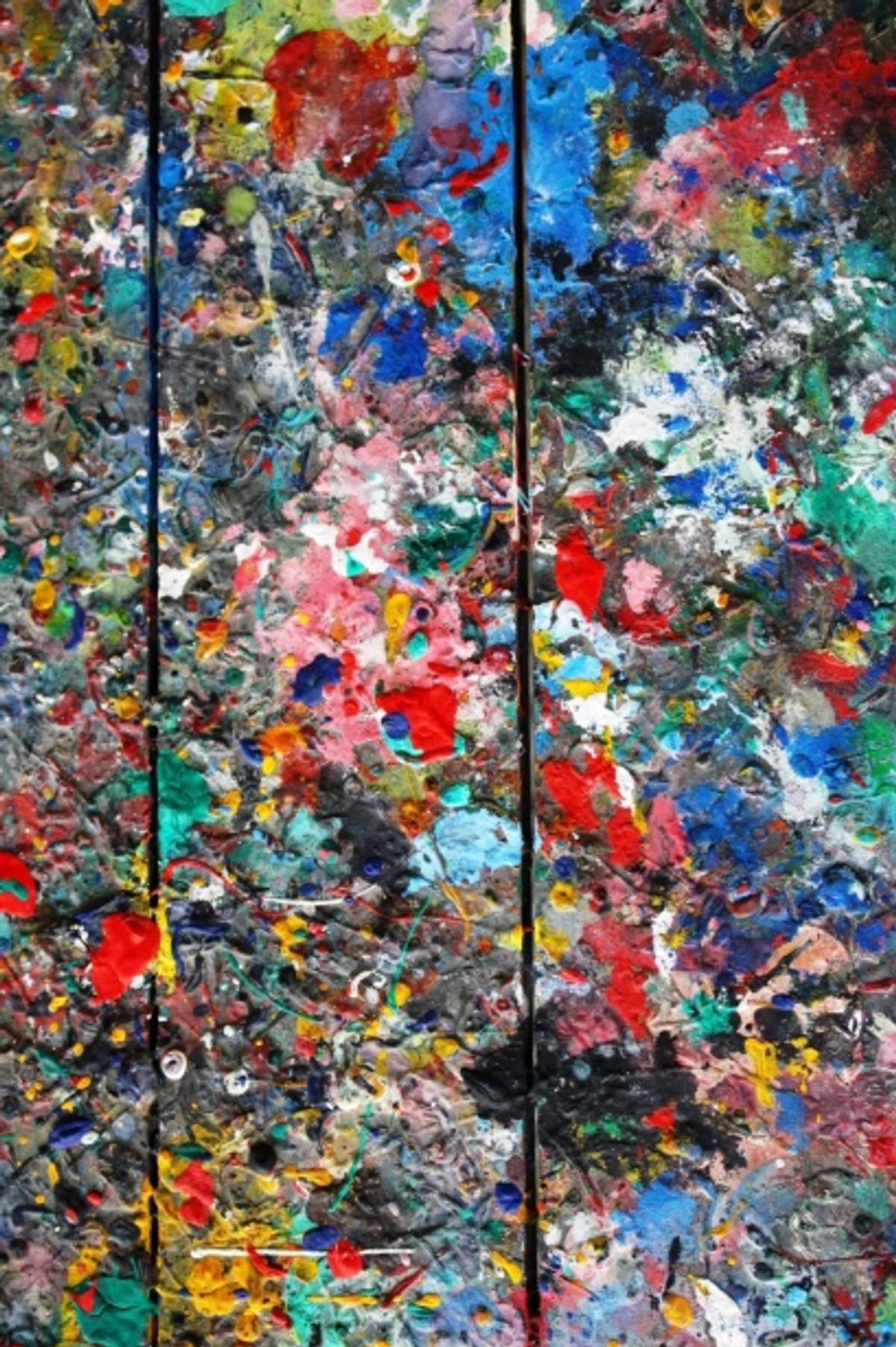
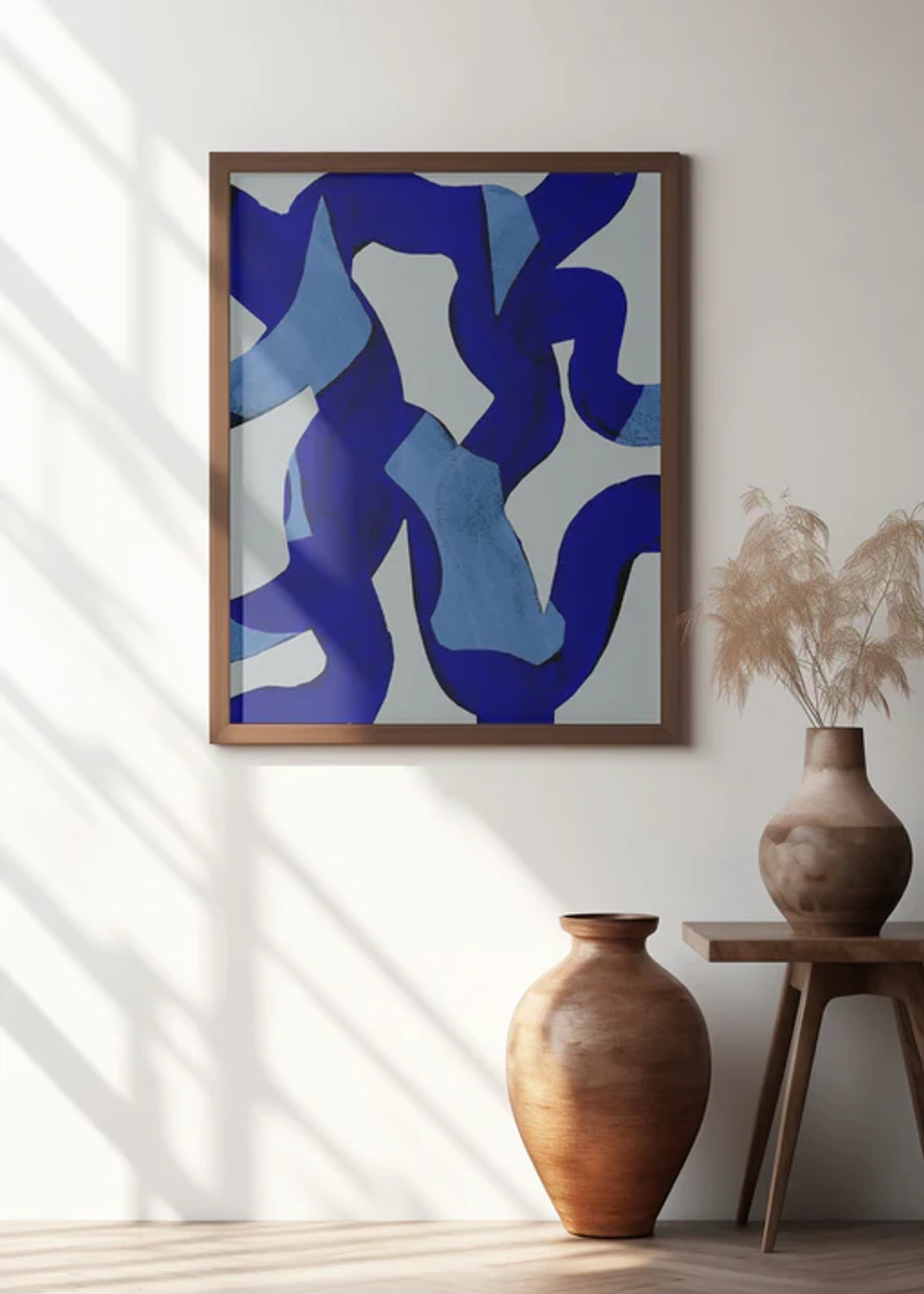
Frequently Asked Questions About Madrid's Galleries
To help you navigate your artistic adventure with ease, here are answers to some frequently asked questions that I often get asked by fellow art lovers and aspiring artists:
How much time should I allocate for each of the main galleries (Prado, Reina Sofía, Thyssen-Bornemisza, Sorolla Museum)?
This really depends on your interest! As a curator, I could spend days in each, meticulously studying every detail. But speaking practically, and from my own experience of balancing depth with energy, I'd suggest at least 3-4 hours for the Prado Museum, and 2-3 hours for both the Reina Sofía Museum and the Thyssen-Bornemisza Museum. For the more intimate Sorolla Museum, 1.5-2 hours is usually sufficient to immerse yourself in his world. If you only have limited time, prioritize the specific works or periods you're most eager to see. Don't feel pressured to see everything; sometimes, a quiet connection with a few pieces is far more rewarding than a frantic rush through many.
What are the typical entry costs, and are there discounts?
For major museums like the Prado, Reina Sofía, and Thyssen-Bornemisza, general admission typically ranges from €12-€18. However, many offer significant discounts for students, seniors (usually over 65), and often for children. Always check their official websites for the most up-to-date pricing and specific requirements for discounts. And, of course, don't forget those wonderful free entry times, which, despite the crowds, are a fantastic option if you're mindful of your budget!
What's the best way to purchase tickets?
Always, always buy your tickets online in advance! This saves you invaluable time queuing, especially at the Prado Museum and Reina Sofía Museum. You can usually choose a specific entry time slot, which helps manage crowd flow and ensures a smoother start to your visit. It’s a little logistical magic that makes the artistic magic easier to experience.
Are there any free entry times for Madrid's galleries?
Yes, absolutely! The major national museums, including the Prado Museum and Reina Sofía Museum, offer free entry during specific hours, usually in the late afternoon/early evening. Check their official websites for the most up-to-date schedules, as these can change. Be warned: While a great option, these times are almost always significantly more crowded, potentially detracting from a serene art-viewing experience. For me, sometimes a quiet connection is worth the ticket price, but if you're on a budget, this is a fantastic opportunity.
What's the best time of year to visit Madrid for art lovers?
For a comfortable visit, I'd highly recommend spring (April-May) or autumn (September-October). The weather is pleasant, ideal for walking between museums, and the crowds are generally more manageable than in the peak summer months. I particularly love these seasons because the natural light is often stunning, perfect for appreciating the nuanced colors in paintings or capturing beautiful photographs of the city's architecture. I remember one glorious October, wandering between the Prado Museum and Thyssen-Bornemisza Museum, the crisp air and golden light making every architectural detail sing – it felt like the city itself was an artwork. Winter is also a good option if you don't mind cooler temperatures, as indoor activities like museum visits become even more appealing.
Is Madrid considered one of the top art capitals of the world?
Without a doubt! With its concentration of world-class museums, vibrant contemporary art scene, and rich artistic heritage, Madrid consistently ranks among the most significant art capitals of the world. Its unique blend of classical masterpieces and cutting-edge contemporary expression truly sets it apart, making it a true treasure chest for any art lover, offering a depth and breadth of artistic expression that few other cities can match.
How accessible are Madrid's major art museums for visitors with disabilities?
I've found that Madrid's major museums, including the Prado Museum, Reina Sofía Museum, and Thyssen-Bornemisza Museum, are generally very accessible. They offer wheelchair access, elevators, and accessible restrooms. Many also provide special services like guided tours for visually or hearing-impaired visitors, though I always recommend checking their official websites or contacting them directly in advance for specific needs and the most up-to-date information. They've put a lot of thought into making art enjoyable for everyone, which is truly fantastic to see.
Which neighborhoods are best for exploring independent galleries and street art?
For independent art galleries in Madrid and dynamic street art, I always point people towards Lavapiés and Malasaña. These vibrant districts are teeming with artist-run spaces, boutique galleries, and impromptu exhibitions. The Barrio de las Letras also has some delightful smaller modern art galleries. The best way to explore? Put on some comfy shoes, wander, and let the city's artistic pulse guide you to unexpected discoveries! You never know what truly unique piece you might stumble upon in these lively areas.
What's the best way to truly 'see' Madrid's street art?
For me, the best way is to simply wander with an open mind through districts like Lavapiés and Malasaña. Don't be afraid to turn down a side street! While guided tours can offer historical context, the thrill of discovery is paramount. Keep an eye on local art blogs or Instagram hashtags like #MadridStreetArt for current works. And remember, street art is ephemeral; what you see today might be gone tomorrow, so embrace the moment!
What are some lesser-known but highly recommended galleries or art spaces in Madrid?
Beyond the well-trodden path, I highly recommend checking out Fundacion Mapfre for its exceptional photography exhibitions, or the Museo Lázaro Galdiano for its wonderfully eclectic private collection. For a more avant-garde experience, Matadero Madrid offers a constantly evolving program of experimental art and performance. And don't forget the seasonal art fairs like ARTIST. These spots often provide a more intimate and unexpected encounter with art, truly fulfilling the promise of discovering Madrid's hidden gems.
Can I photograph artwork in Madrid's museums?
Generally, yes, but with important caveats! Most museums allow photography for personal use, but often without flash and without tripods or selfie sticks. Some specific temporary exhibitions or even individual artworks might have stricter restrictions. I always advise checking the museum's specific photography policy upon entry or on their website. And remember, the goal isn't just to capture an image, but to experience the art – sometimes putting the camera away allows for a deeper connection. After all, the best memories are often those you can't quite capture with a lens.
And that's it for now – remember, every corner of Madrid holds a story waiting to be seen, to be felt, and perhaps, to inspire your own creative spark!




